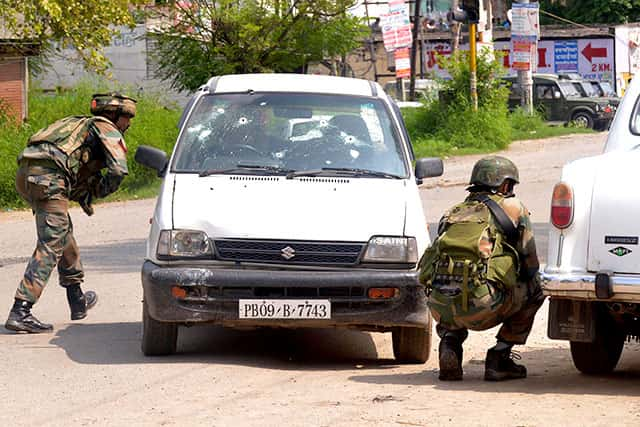Gurdaspur attack: Punjab Police SWAT team bang on target
Monday’s terror attack in Gurdaspur was the first time that the Punjab Police put its four-year-old Special Weapons and Tactics (SWAT) to the real test. Trained in Krav Maga, an Israeli military counter-terrorism system, these sharpshooters proved their mettle by leading the assault on three armed, suicidal terrorists who had retreated into barracks of the Dinanagar police station.
Monday’s terror attack in Gurdaspur was the first time that the Punjab Police put its four-year-old Special Weapons and Tactics (SWAT) to the real test. Trained in Krav Maga, an Israeli military counter-terrorism system, these sharpshooters proved their mettle by leading the assault on three armed, suicidal terrorists who had retreated into barracks of the Dinanagar police station.

It had been only three days since the 28-man SWAT team was shifted from their base camp near Chandigarh for training with the National Security Guard (NSG) to Amritsar, just an hour’s drive away from the battle zone. It was just as well, for the SWAT team reached the battle zone in Gurdaspur on Monday a little before 10am.
They swung into action like the well-trained fighters they are, splitting up into four teams with snipers posted on the top floor of a residential building close to the two-storey police barracks from which the terrorists were firing their deadly AK-47s.
“The ammunition terrorists used was of armour-piercing category. The ammunition they used was very lethal,” a senior Punjab police officer who was part of the operation said. A SWAT commando, who claimed to have killed one of the terrorists, said: “The terrorists were very well-trained and were good shots. Initially, they also kept shifting their positions quickly to confuse the SWAT teams.”
A deputy inspector general (DIG) rank cop who earlier served in the CRPF was given the charge of planning and executing the SWAT team strategy by coordinating it with other wings of the Punjab Police. “We targeted the building from four different dominating directions. Snipers were positioned at a strategic point and they not only confined the terrorists to one room of the building, but also informed us about their movement,” said a SWAT commando.
While one terrorist was killed in the morning, another was shot or injured in the afternoon. After that, the terrorists stopped firing for two hours. “It was actually a trap. We had sensed that. They wanted us to advance towards the building so that they could fire at us. Director General of Police Sumedh Singh Saini, who was in the battle zone, asked us to be patient. The DGP changed the strategy to fox terrorists,” the commando said.

AFP Photo
Around 3.30 pm the police lobbed grenades into the target building, demolishing the walls of room where the terrorists were hiding. Scanning the scene from the dominating feature nearby, SWAT members finally spotted the three bulletridden bodies of the terrorists. They moved in, carrying out what is called a combing assault, the officer said, pointing out that this was a “Punjab Police operation of which SWAT was a vital wing.” The final assault or combing operation task was given to SWAT only to reduce the chances of casualties. The training paid off as all the commandos went home safe.
Vikram Kapoor, who had trained the commandos in Krav Maga, said they had fired 1.80 lakh rounds during their 60-day training. “In 2010, a group of 40 personnel from Punjab Police armoured battalion in Kapurthala were selected for SWAT training. At that time, they knew only one thing about counter-terrorism and that was how to fire a weapon. During 60 days of training, they were taught Krav Maga, room intervention, close and open techniques and many more secret tactics,” he said.
Kapoor, who is the first person to bring Krav Maga to India, said the commandos were also trained to deal with situations like bus, train and plane hijacking. “Safety was the most important part of their training. That is why none of them were injured during the mission,” he said.
Read:





